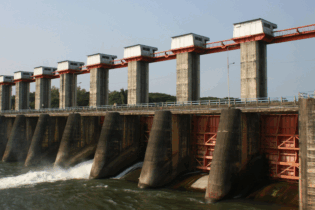There has been a downward trend in the number of pipe bursts, as well as a reduction in water losses, on the City of Cape Town’s reticulation network during the first five months of 2015.
According to the municipality this is thanks to the City’s pipe replacement programmes, intensified maintenance efforts, and pressure management initiatives. The city has noted a significantly lower number of pipe bursts required repairs in the city between 1 July 2014 and 31 May 2015, compared with the same period in the years before. Up until 31 May 2015, a total of 2 330 pipe bursts had been repaired, compared with 2 944 over the same period in the 2013/2014 financial year. The corresponding rate of repairs necessary per 100 km of piping per year, which is a more revealing measure of the performance of the network, has also improved significantly: from 31 repairs per 100 km of pipe in 2013/14 to 24 bursts per 100 km in 2014/15. “Although the number of repairs may not necessarily coincide with a reduction in the City’s total water loss estimates (due to factors such undetected leaks, the type of rupture, and the pressure in the pipe at the time), in this case the City’s water loss estimates also show a downward trend,” says Councillor Ernest Sonnenberg, the City’s Mayoral Committee Member for Utility Services.“During the 2013/14 financial year, an estimated 1.5% of total water treated was lost due to bursts, leaks and overflows, whereas so far this financial year, between 1 July 2014 and 31 May 2015, this figure is down to 1.2%,” Sonnenberg explains.
Extensive implementation of water pressure management systems in various areas including Langa, Bishop Lavis, Retreat, Crossroads and Pinelands continues to pay dividends. “Pressure reduction devices will continue to be installed throughout the city where these projects show beneficial results. This was initially focused in those areas where water losses have been the highest. It is estimated that 42 000 kl of water is saved every day through our pressure management programme. This is the equivalent of 17 Olympic-sized swimming pools,” notes Sonnenberg. Retrofitting programmes throughout the city focus on replacing infrastructure in problem areas, as well as in areas where the piping is reaching the end of its design-life.







